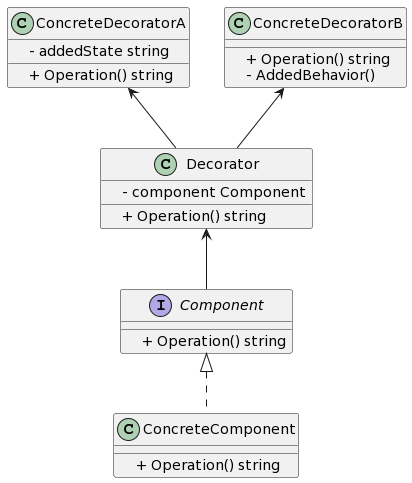1. What is the Decorator Pattern
The decorator pattern is a structural design pattern that allows adding additional features to an object dynamically without modifying the object's code. It achieves this by wrapping the object in a decorator class, providing the ability to add, modify, or enhance the object's behavior at runtime.
2. Characteristics and Advantages of the Decorator Pattern
The characteristics and advantages of the decorator pattern include:
- Dynamically extending the functionality of an object without modifying its code.
- Compliance with the Open-Closed Principle, allowing dynamic addition and removal of decorators.
- Ability to combine multiple decorators to achieve nested functionality extensions.
- Independence of decorators from the way the object is decorated, allowing changes to be made independently.
3. Examples of Practical Applications of the Decorator Pattern
The decorator pattern has many practical applications in software development, such as:
- Dynamically adding logging functionality
- Dynamically adding caching functionality
- Dynamic data validation
4. Implementation of the Decorator Pattern in Golang
4.1. UML Class Diagram

4.2. Example Introduction
In the example, we have a Component interface and a ConcreteComponent class that implements the Operation method of the Component interface.
Then we have a Decorator class, which also implements the Component interface. The Decorator class has a member variable of type Component.
Both ConcreteDecoratorA and ConcreteDecoratorB classes inherit from the Decorator class and implement additional functionality by overriding the Operation method.
4.3. Implementation Step 1: Define the interface and implementation class
type Component interface {
Operation() string
}
type ConcreteComponent struct {}
func (c *ConcreteComponent) Operation() string {
return "specific component operation"
}
4.4. Implementation Step 2: Define the decorator
type Decorator struct {
component Component
}
func (d *Decorator) Operation() string {
return d.component.Operation()
}
4.5. Implementation Step 3: Implementation of the decorator
type ConcreteDecoratorA struct {
Decorator
addedState string
}
func (c *ConcreteDecoratorA) Operation() string {
c.addedState = "New State"
return c.addedState + " " + c.component.Operation()
}
type ConcreteDecoratorB struct {
Decorator
}
func (c *ConcreteDecoratorB) Operation() string {
return "specific decorator B operation " + c.component.Operation()
}
4.6. Implementation Step 4: Using the decorator
func main() {
component := &ConcreteComponent{}
decoratorA := &ConcreteDecoratorA{}
decoratorA.component = component
decoratorB := &ConcreteDecoratorB{}
decoratorB.component = decoratorA
result := decoratorB.Operation()
fmt.Println(result)
}
5. Comparison of the Decorator Pattern with Other Design Patterns
5.1. Comparison with Inheritance
Compared with inheritance, the decorator pattern can dynamically add functionality without modifying existing code, whereas inheritance is static and needs to be determined at compile time.
5.2. Comparison with the Static Proxy Pattern
The decorator pattern and the static proxy pattern can both achieve function extension, but the decorator pattern is more flexible and allows for dynamic addition and removal of functionality.
5.3. Comparison with the Dynamic Proxy Pattern
Both the decorator pattern and the dynamic proxy pattern can extend the functionality of objects at runtime. However, the decorator pattern decorates a single object, while the dynamic proxy pattern involves indirect access between the proxy object and the target object.